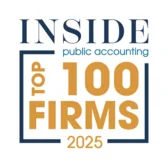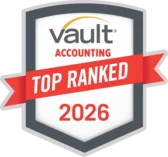Taxpayers with Qualified Opportunity Funds (QOFs) and investments in Qualified Opportunity Zone Businesses (QOZBs) on or after the disaster declaration date(s)* may be eligible for an extra 24 months to execute their working capital safe harbor (WCSH) plan. This extension, provided under the Opportunity Zone (OZ) code and regulations, applies to those in federally declared disaster areas and aims to support OZ investors.
The OZ program’s final regulations mention that a federally declared disaster will allow a QOZB’s WCSH business plan to be extended for up to two additional years. For a zone to get an extension the President must declare the census tract a disaster under the Robert T. Stafford Disaster Relief and Emergency Assistance Act. In today’s uncertain economy this extension is especially beneficial for OZ investors who need additional time to determine the best course of action to invest their deferred OZ gains. With the real estate, banking and international economic uncertainties, this extension will be welcomed in the regions that are eligible.
Which Taxpayers are Impacted?
The recent severe winter storms, straight-line winds, flooding, landslides, and mudslides in California have led to 41 affected counties being declared federal disaster areas. Taxpayers in these counties will generally be eligible for the additional 24-month extension to implement their WCSH business plans. Arkansas and Georgia have also experienced severe storms, tornadoes, and winds, resulting in some counties being designated as federal disaster areas.
While it's unclear if taxpayers evaluating OZ investments outside these specific disaster regions will be eligible for the extension, HCVT can request relief on their behalf based on specific facts.
For more information on the federal disaster declarations and other states that have been affected, please visit https://www.fema.gov/disaster/current
Technical Rules
If the qualified opportunity zone business is located in a qualified opportunity zone within a Federally declared disaster, they may receive not more than an additional 24 months to consume its working capital assets, as long as it otherwise meets the following requirements:
- These amounts are designated in writing for the development of a trade or business in a qualified opportunity zone, including, when appropriate, the acquisition, construction and/or substantial improvement of tangible property in such a zone
- There is a reasonable written schedule consistent with the ordinary start-up of a trade or business for the expenditure of the working capital assets; under this schedule, at least 70% of the QOZB funds must generally be invested into Qualified Opportunity Zone Business Property (QOZBP) within 31 months (55 months under IRS Notice 2020-39) from the date of receipt by the QOZB
The working capital assets are actually used in a manner that is substantially consistent with the writing and written schedule noted above; if consumption of the working capital assets is delayed by waiting for governmental action the application for which is complete, that delay does not cause a failure of this paragraph.
Technical Analysis – The Written WCSH Plan
The OZ program is generally extremely taxpayer friendly, and this extension is just another example of Congress providing taxpayers with additional time to deploy cash into under-served communities.
In addition, if the calamity of the federal declared disaster(s) did not have a direct and immediate impact to your actual or proposed OZ property or business operations, the IRS could still potentially deny you all or part of the additional 24 months to your WCSH business plan. However, please also consider other direct and indirect factors that could affect your real estate development or business operations business plan, such as:
- Limitations on the availability of real estate or business investments caused by flooding, wind and other factors
- Supply chain issues
- Workforce issues
- Federal, state or local government closures and delays
- Logistic and transportation delays, etc.
We recommend that you carefully review your facts and circumstances and keep detailed and accurate records and backup documents to support the reason for the additional extensions to your WCSH business plan. While the 24 months might not be a home run for all taxpayers, it is still a useful tool for those who qualify for the OZ program and need additional time to find a business investment opportunity in the OZ.
OZ Program Overview
The goal of the OZ program is to allow individuals and various entities to sell their appreciated capital assets and elect to reinvest all or a portion of the capital gain income into a QOF, promoting job creation and economic growth in the designated OZ census tracts. The deadline to roll over capital gains into a “captive” or third-party QOF is generally 180 days after the tax reporting date, with an extended deadline until September 10 of the subsequent year of the gain reporting for pass-through entities. The taxpayer is allowed to defer the original capital gain only until December 31, 2026, when they will need to eventually pay the capital gain on the reported income, generally by April 15, 2027.
After investing in a QOF, the QOF must drop down 90% or more of the QOFs total assets into a QOZB within six months of the QOF funding date. The QOZB must then invest the funds from the QOF into OZ property (i.e., real estate) or set-up or move an operating business into one or more OZ census tract. The QOZB will also need to create and/or update their WCSH business plan to be compliant with OZ code/regulations. Finally, after 10 years of funding, the QOF investor can sell the investment and the tax basis will be stepped-up to the fair market value at the time of sale, producing zero federal gain or depreciation recapture (in most states).
For more information about the OZ program, please visit our HCVT landing page here.
* Beginning February 21, 2023 for California – see FEMA link for other states

